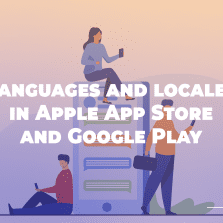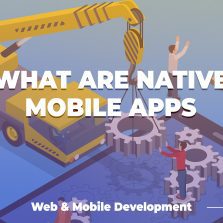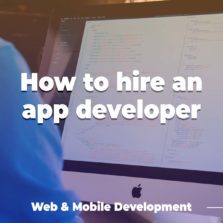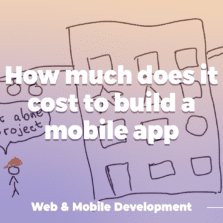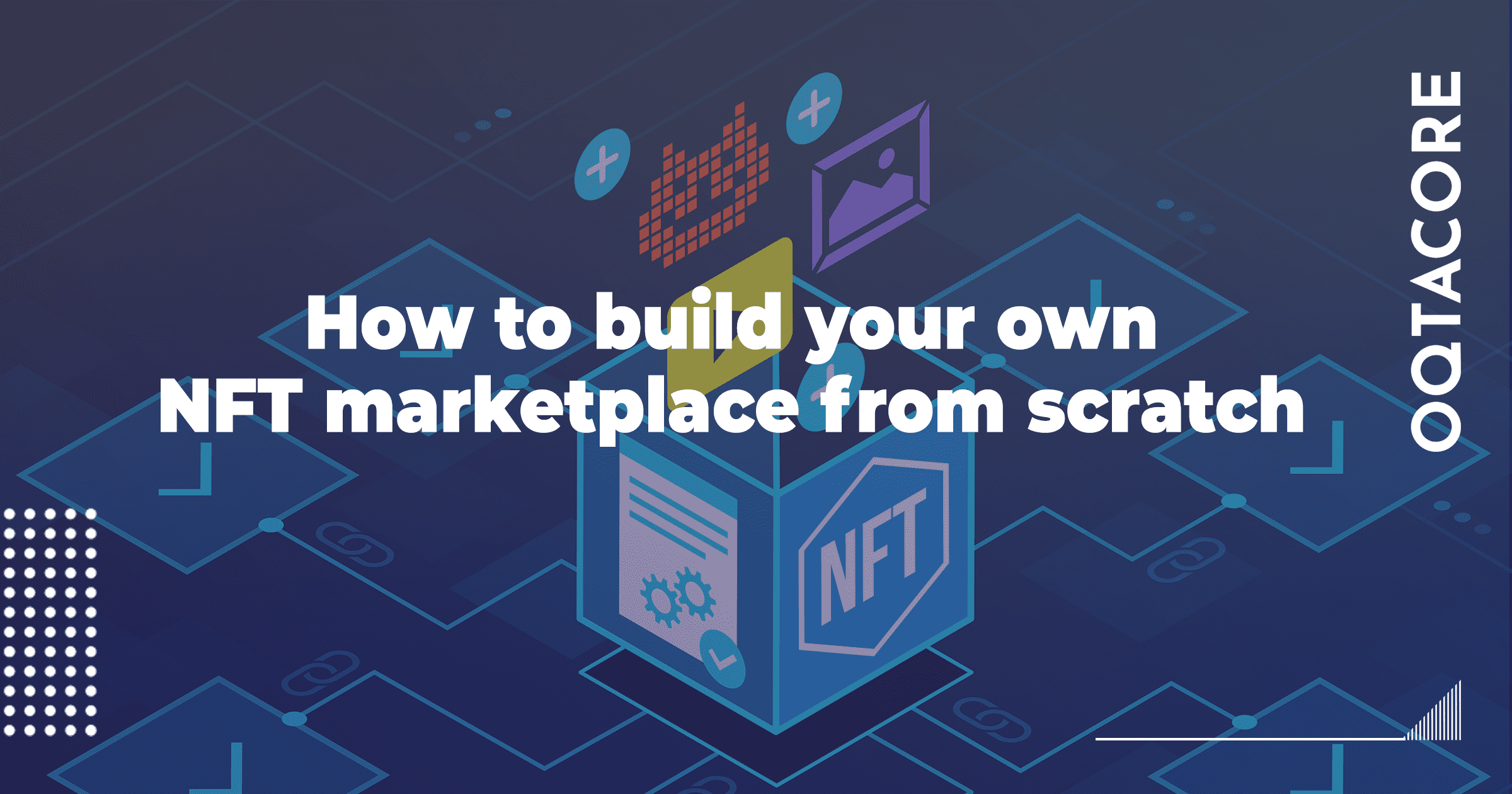

Most of the existing NFT marketplaces are aimed at the world of digital art, sports cards, and online gaming. In reality, the potential of NFT is much broader; many categories of business not outlined above could derive tremendous value from using NFT but have never created suitable smart contracts or found markets to use them.
Any technology evolves from the simple to the complex. For example, in the case of blockchain, bitcoin was the simplest implementation of blockchain transactions – sending base currency from one user to another. But 6 years later, Ethereum introduced decentralized applications that allow transactions of absolutely any type – voting, property rental, crypto exchange – anything.
The same story happens now with NFTs. In basic terms, NFTs are unique tokens that can represent anything, exist by any rules, and participate in any economy.
Collectible cards are the simplest version of NFTs. However, NFTs don’t have to be complete analogs of static pieces of cardboard. You can bring life into NFT tokens – each token can change over time, can embody a living being with a level of health and experience, or, for example, can combine with other NFTs into one large entity (as an example, assemble an NFT combat robot from NFT parts). 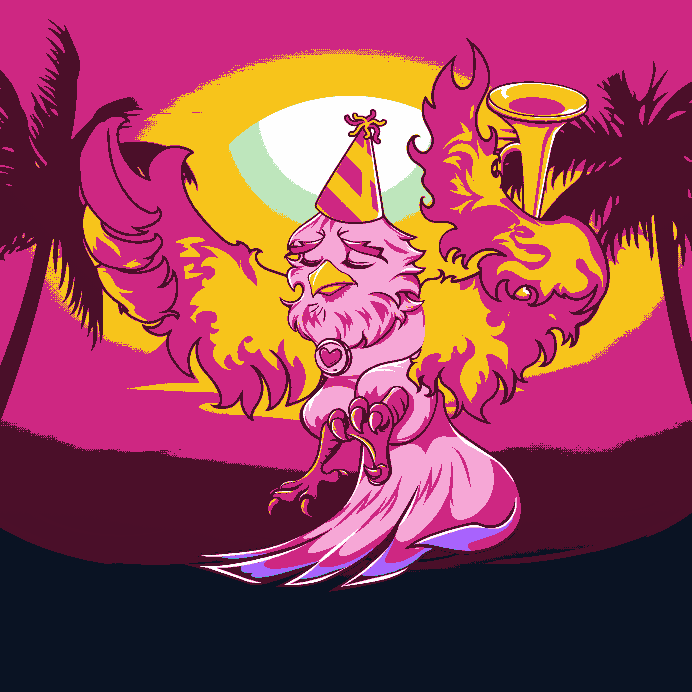

NFTs can be rented, can be bought as mortgages, can be duplicated, can be fragmented for shared ownership. The possibilities of NFT are limited only by imagination, not by technical ability.
Perhaps your idea to use NFT would appeal to the market and the community. So how do you bring your vision of using NFT to life? Here’s a step-by-step plan.
- NFT market research: identifying the prospects and current needs of the industry;
- Understanding how NFT marketplaces work in order to determine the lower bound of functionality for your marketplace;
- Coming up with a business model for the marketplace: possible scenarios for resolving individual market needs and subsequent project scaling;
- Developing the NFT marketplace: outlining the implementation specifications;
- Collaborating with other projects: it is important to interact with other projects in the industry and look for common ground.
- Marketing strategy: outlining the main project promotion scenarios;
- Launching the turnkey NFT marketplace: a couple of words on best practices.
NFT Market Research
The NFT market grew significantly in 2021 and sales of NFTs reached some $25 billion, in 2020 sales volume was just $94.9 million (adding 24900% in sales volume). In December, total sales in the NFT market surpassed $12.0 billion, and the total number of sales exceeded 13 million
In the first two weeks of 2022, the NFTs/Gaming vertical within the crypto sector received nearly $5.0 billion in venture funding, ranking third among private funding. At the end of 2021, the NFT segment had edged out even the unstoppable growth of the DeFi industry, nearly equaling the number of deals.
Blockchain/Crypto deals in 2021. Source: Crunchbase, Dove Metrics, Pitchbook, The Block Research
NFT marketplaces are actively involving music artists and other celebrities for collaboration. Stars get beautiful NFT pictures and profit from it for years. Celebrities are actively exploiting the NFT phenomenon, delighting their fans.
We also see an influx of big sports and entertainment brands diving into the innovative structure of this crypto market segment. Major basketball leagues, such as the NBA are issuing NFTs to fans, and at this point, some are considering the thought of introducing NFTs in place of digital and paper tickets to their games.
Currently, most of the NFTs sold are concentrated in the digital art field. Does this mean that NFTs are exclusively for digital artworks? Not at all. NFTs can be used by a wide variety of companies to combat digital piracy, or to create additional revenue sources.
NFT marketplaces offer a truly endless space for corporate projects and collaborations designed to improve the quality of business operations. One of the significant features of NFT markets is the association of individuals and major corporations that can provide custody of freelance artists, enthusiasts and subcultures. The importance of NFTs cannot be underestimated, and today is the perfect time to maximize their usefulness.
How NFT Marketplaces Work
Before we delve into how NFT marketplaces are created, it’s important to understand how they function from the customer’s perspective. Most marketplaces use similar functionality.
First, users need to register with the marketplace and connect a digital Web3 wallet to store their NFTs. Users can then create and buy assets by uploading them to the marketplace, or vice versa – sending purchased NFTs to their wallet. NFT creators can also choose which payment tokens to accept for their work, set fees and royalties, if provided for by the marketplace.
The following features should be supported on every NFT marketplace:
Explorer: This feature allows the user to see all relevant information about a lot (title, price, description, owner, payment method, rating, etc.). Some NFT marketplaces also provide additional information about blockchain protocols and tokens so that users could verify the authenticity of the NFTs posted.
Search system: It is important to ensure that users can easily find what they are looking for. Different resources should be grouped into categories such as art, photos, videos, memes, music, games, real estate, etc. to make it easier to navigate the marketplace. Filters help to sort products, especially if there are many similar ones among them.
Personal accounts: In order to sell and buy NFTs on the marketplace, users need to create an account. The registration process is usually done via email, phone number or a social networking account. Alternatively, you can implement a completely anonymous registration solely by connecting MetaMask, MyEtherWallet, Coinbase Wallet or other Web3 wallets.
Lot creation: This process should be simple and fast. NFT creators should be able to specify names, prices, descriptions, tags, external links and other features for their products.
NFT Wallet: Users need a wallet to send, receive and store NFT tokens and cryptocurrencies. To do this, you need integrations with various wallets. It is important to remember that different wallets support different blockchains, and there is no single wallet for everything. The easiest solution is to provide support for WalletConnect, a single protocol supported by any major wallet app. In addition, we recommend integrating separately with MetaMask, the most well-known and functional wallet supporting Ethereum, Polygon, and Binance Smart Chain.
It’s important to think about the design and logic of users’ personal pages. Enable NFT creators to post their works on their personal page for a fixed price or by auction, allow them to leave links to the project website, social networking sites, and let users be able to maintain a small blog and answer buyers’ questions – and you’ll win a significant share of user likes.
Coming up with a business model for your NFT marketplace
Organizations that need to create smart contracts for businesses, games, or any digital project on blockchain can present a marketplace in different ways: it can be a narrowly focused project, or a global one. Each digital product sold on the marketplace can have a fixed price or be auctioned off.
| On every reputable marketplace, customers can easily check whether a product is genuine. This reduces the cases of customers buying counterfeit products. Big brands are losing billions every year due to product counterfeiting, and innovative NFT marketplaces are tackling this challenge head on. |
Think about the features of your project that would set it apart from others. You might want your NFT site to sell lots only at a fixed price. Or, let’s say, you could take over the transaction costs of placing auction bids, build an off-chain bid storage infrastructure (eliminating transaction fees), encourage the development of trading bots, or build user-friendly interfaces. In practice, marketplaces vary widely in these respects. For example, OpenSea allows users to bid without commission, while Larva Labs requires users to pay so-called gas fees to participate in bidding. OpenSea encourages third-party trading bots, while NBA Top Shot does not endorse such tools.
Marketplaces can differ in more than one way, making it difficult to isolate the qualitative advantages of some marketplaces over others. But as of today, some facts from the current industry experience can be highlighted. For example, Insead Business School and Research Institute has found that a reduction in bidding costs does not change the quantity of sales, but increases the number of bids and consequently price of NFTs placed.
In general, the concept of NFT was originally intended to endow each token with unique parameters. These unique properties can come from the real world (for example, an NFT could represent a house property with street address). Or such parameters can be made up, as with digital art.
Various types of collectibles can be tokenized, from digital art to games, music, movies and real estate. Your marketplace can offer a unique solution for a particular class of NFT products, or effectively support the entire segment. Decide what works best for you and start developing.
Developing the NFT marketplace
Developing an NFT marketplace can seem like a daunting undertaking, requiring the managers of such projects to have a comprehensive commitment to the various co-dependent aspects of production and further product deployment.
In the development team, you will need:
- Web and/or mobile developers who can create and maintain a functional web app or mobile app;
- Blockchain development specialists to help you write functional and vulnerability-free smart contracts for your marketplace; and to provide tokenomics in case you decide to do an NFT-drop, DAO or ICO to raise funds
- Security experts to help detect and prevent potential vulnerabilities during the development phase of your marketplace and periodically audit the subsequent phases of your product deployment;
- Cloud computing experts who would deploy your resources in the cloud to ensure 99.999% uptime and maximum loading speed from anywhere in the world;
- Frontend developers who would make the website as smooth and pleasant as possible, as well as ensure gathering of metrics, analytics, make a convenient system of website localization in all languages and provide maximum SEO, so that your site would quickly rise to the ranks to the top of search engine results;
- DevOps engineers, i.e. experts in deployment, configuration and automation of processes related to subsequent updates and builds for individual components of your marketplace;
- UI&UX designers who would develop a user-friendly interface;
- QA engineers and testers who would help to identify performance and usability issues.
Basically, the development strategy can be broken down into three main stages: strategizing, prototyping, direct development and testing.
Strategizing
As always, it all starts with an idea, which should be carefully studied from all possible angles: from the side of business, technology, target audience, competition, and so on.
It is important to determine the blockchains that your marketplace would support. You will have to start from the tokens you intend to trade, as you will need to support the blockchains hosting those tokens.
Also, you will need to answer questions such as:
- What would make your NFT store be different from other marketplaces?
- Will your customers create their own NFTs on the marketplace?
- What NFTs will you support?
- How exactly will users deposit cryptocurrency to buy NFT on your marketplace?
- How will customers pay for NFTs? Partnerships can help you in solving the last question.
At Oqtacore, experts usually conduct a preliminary workshop to sort out these uncertainties and form a high-level business plan for the product being released.
Prototyping
Having determined the basic strategy for product development, you should move on to prototyping its user interface. At this stage, you should decide whether it will be a mobile app, a desktop app, or a website. If you have sufficient funding, you can afford to develop all at once in parallel.
The goal of the prototyping phase is to determine the user paths through your NFT marketplace, and then specify and test them.
This approach ensures that you’re not wasting time and money coding something that customers won’t like. That’s why it’s recommended that you start developing the NFT marketplace with rapid prototyping.
Development and testing
At this stage, developers can begin to directly write code for the NFT marketplace. During and after the development, it is necessary to test individual elements, involving QA testers who would help to detect bugs and use cases that are inconvenient for users in order to return them to the programmers in time for improvement.
Among other things, you (independently, or with the involvement of experienced industry economists) will also need to work out the model of strategic interaction between buyers and sellers. You may decide to integrate DAO (Decentralized Autonomous Organizations) or DeFi (Decentralized Finance) components into the marketplace, and you will need relevant blockchain and smart contract developers.
Marketing Strategy
Search the phrase “NFT marketplace” in Google and you will see that the market is flooded with marketplaces selling digital art and other NFTs at exorbitant prices on the Ethereum blockchain. Indeed, Ethereum is the most popular and respected blockchain for creating NFTs today, and you can limit yourself to it, but you may wish to support other blockchains like Solana, or Flow.
The functionality of these blockchains differs, and this should be taken into account if you’re focused on popular and prestigious Layer-1 networks (which means priority in Ethereum support), performance and scalability of smart contracts (Polygon would win), or on low cost of transactions (Solana performs well here). Focusing on the NFT/Gaming vertical? It’s worth looking at Flow or Wax, blockchains for open-world gaming. Depending on your marketing goals, you can support all possible blockchains adapted to the respective NFT smart contracts.
The choice of blockchain partly solves your marketing goals. So, if you thought your marketplace would be on WAX, and then you are suddenly offered a partnership with Binance Labs, but asked to switch to BSC, go for it. Partnerships are very important for promoting blockchain projects. And supporting a new blockchain is just a small technical issue compared to an extremely important partnership for your business.
Rare Club Nifty Newsletter #9 Positivity abound and the importance of NFTs in 2022
NFT is much more than just being able to buy digital artwork, and you’re primarily creating a platform that offers a variety of solutions for the benefit of brands and individuals.
You might want to limit yourself to a specific class of corporate brands, as VeVe did, by focusing on a partnership with Marvel. Consider reaching out to individual brands and offering them NFT solutions that connect with their products, events, experiences and marketing campaigns. The Internet and social media have made it relatively easy to imitate corporate brand products and pass them off as legitimate. It is important to communicate to corporate brands the benefits they would gain from the functionality of today’s digital solutions in the NFT segment. Focusing your marketing campaign on this mission, you can succeed by connecting your business with multi-billion-dollar corporations.
Analysis of social media traffic has shown that Twitter provides the largest number of conversions to NFT marketplaces. Meanwhile, no less important are marketing campaigns in instant messaging platforms, especially Discord and Telegram. 17.5% of web traffic to OpenSea comes from social media. Over 𝟱𝟱% of that traffic comes from Twitter.
Launching a turnkey NFT marketplace
NFT projects are in huge demand today, authenticating digital resources and products and simplifying the logic of providing products and services online. NFTs help to work not only with digital, but already with real estate and other assets, gradually replacing ticketing services and traditional notary services.
Developing and promoting your own marketplace is not an easy task, commensurate with opening your own cryptocurrency exchange. You must comply with many factors, from a flawlessly organized project security to a well-built marketing strategy.
In order to assemble a team of developers and marketers, it is not enough to have ordinary programmers who can write code, or PR specialists who can deftly interact with the media. You need to find specialists who have successful experience in launching similar projects.
Oqtacore is a leading company for development of crypto marketplaces and crypto exchanges. Oqtacore has been successfully launching, supporting and maintaining tech startups projects since 2013. If you are looking to build your own crypto project Oqtacore has a wide range of experts that a blockchain project needs: web developers and designers, smart contract developers, security experts, experienced economists and testers, who would efficiently make sure that your idea would start generating cashflow soon after launch.

